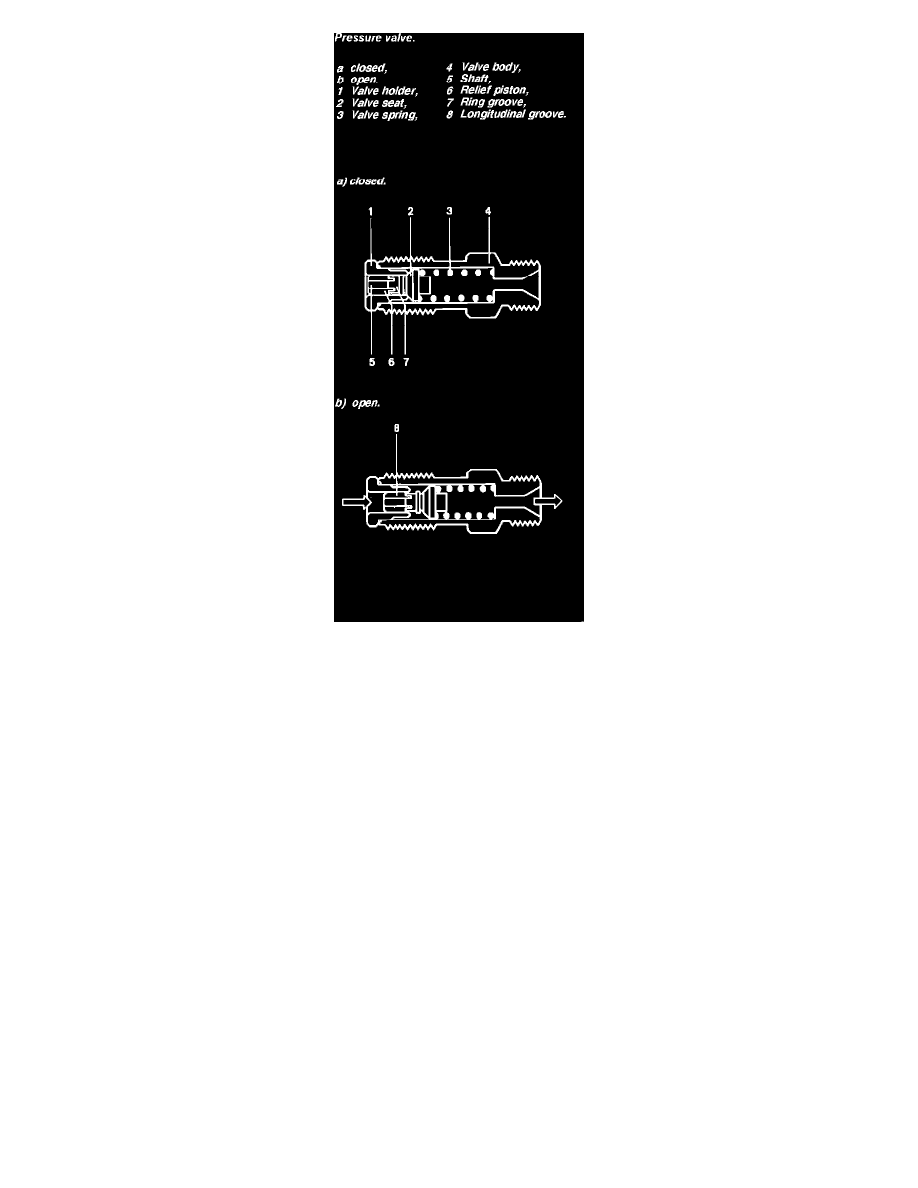Rabbit Hatchback L4-1588cc 1.6L DSL SOHC (1983)

Fig. 7 Pressure Valve
The pressure valve, Fig. 7, closes the injection line off from the pump and has the job of relieving the injection line by removing a defined volume of
fuel after the delivery phase. It also determines the precise point at which the injection nozzle closes at the end of injection. At the same time, stable
pressure conditions between the injection pulses are created, regardless of the quantity of fuel being injected at the particular instant.
The pressure valve is a fluid-controlled plunger type, opened by fuel pressure and closed by its return spring. Between plunger delivery strokes it is
closed; pressure line and distributor head outlet bore are thereby separated. During delivery, the valve is lifted from its seat by the high fuel pressure; fuel
then flows via longitudinal slits into a ring groove and through the pressure-valve body, the pressure line and nozzle holder to the injection nozzle.
As delivery concludes (plunger cutoff bore opens), pressure on the high-pressure side falls to that of the pump cavity and the pressure valve is closed
by its spring.
Pressure Valve Return Restriction
Because of the necessary and precise pressure relief at the end of the injection pulse, pressure waves are generated. In turn these are reflected at the
pressure valve, and lead to another opening of the injection nozzle or vacuum conditions in the injector line. The result is post-injection of fuel, with
attendant increases in exhaust emissions or wear-inducing cavitation in the injection lines or nozzles.
To prevent such reflections, a restriction bore, effective only in the return direction, is added to the pressure valve. This restriction consists of a valve
plate and pressure spring; during delivery it has no effect, but as fuel tries to return it imposes flow resistance and a damping effect is the result.
Exhaust Turbocharging
Because it increases the mass of air inducted, exhaust turbocharging boosts a Diesel engine's power output significantly over that with natural
aspiration, with little increase in dimensions, weight and rotational speed. At the same time, the brake horsepower can be increased corresponding to the
increase in air mass. In addition, specific fuel consumption can often be decreased.
With an exhaust turbocharger, the engine's exhaust is not simply released to the atmosphere. Its energy is utilized to drive the turbocharger's turbine at
rotational speeds up to 100,000 rpm. In turn, by means of a shaft, the turbine drives a compressor, which draws in air, compresses it, and delivers it to the
engine under pressure. Not just the pressure, but also the temperature of the air is raised; if the temperature increase is too great, some form of
intercooling between turbocharger and engine intake is needed.
